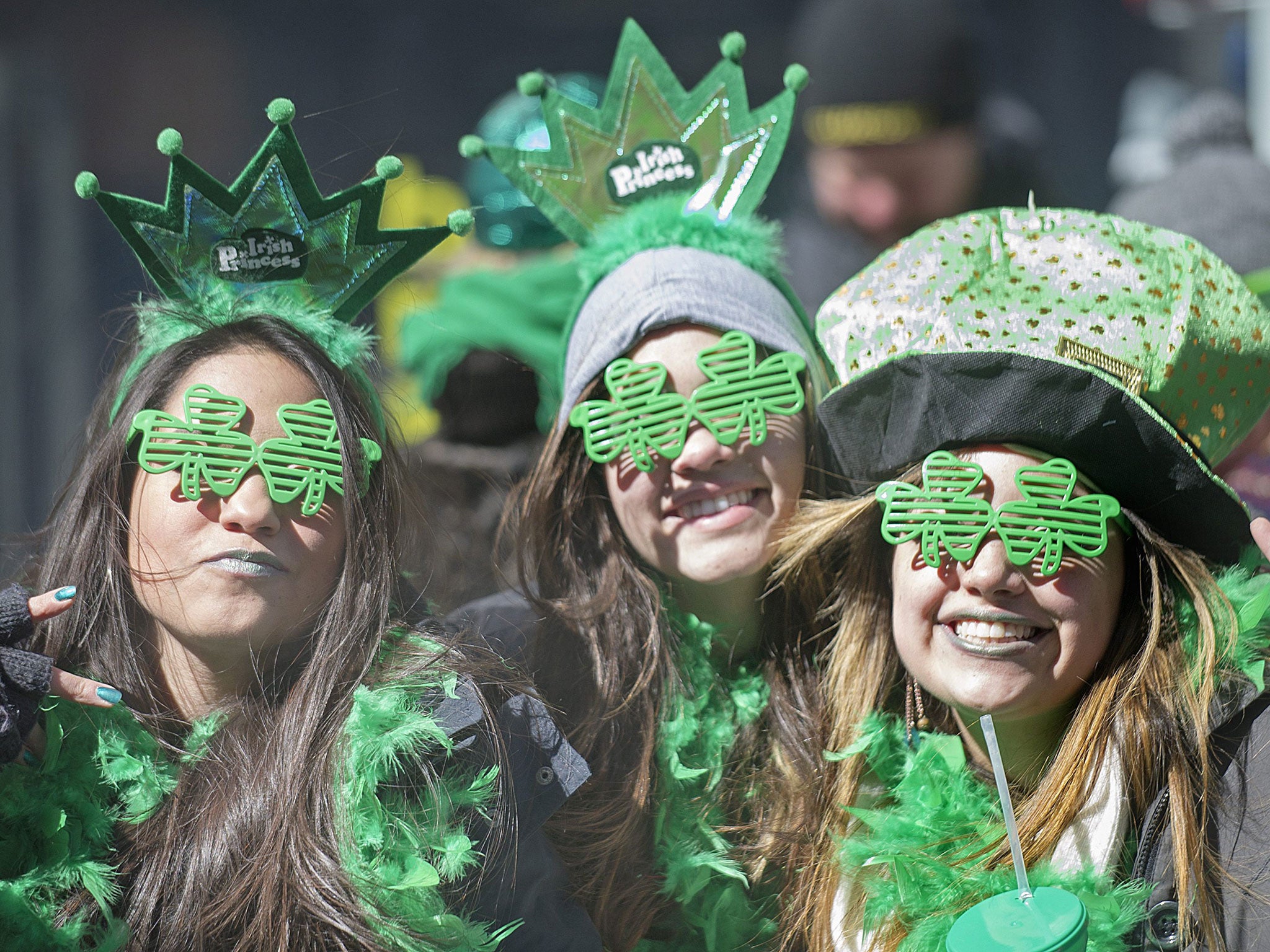St Patrick's Day 2015: Seven things you didn't know about the saint, the parades, and Guinness
Spoiler alert: St Patrick was not, in fact, Irish

Your support helps us to tell the story
From reproductive rights to climate change to Big Tech, The Independent is on the ground when the story is developing. Whether it's investigating the financials of Elon Musk's pro-Trump PAC or producing our latest documentary, 'The A Word', which shines a light on the American women fighting for reproductive rights, we know how important it is to parse out the facts from the messaging.
At such a critical moment in US history, we need reporters on the ground. Your donation allows us to keep sending journalists to speak to both sides of the story.
The Independent is trusted by Americans across the entire political spectrum. And unlike many other quality news outlets, we choose not to lock Americans out of our reporting and analysis with paywalls. We believe quality journalism should be available to everyone, paid for by those who can afford it.
Your support makes all the difference.Celebrated each year on 17 March, St Patrick’s Day, now a global celebration, is just around the corner. It has come to be known as the day that people adorn themselves with green clothing and hats, paint shamrocks on their faces and drink Guinness, while the Chicago River is dyed a traditional green.
But how much do we really know about St Patrick, who revellers owe their festivities to, and the ‘Irish’ traditions so widely celebrated each year?
St Patrick was not Irish
That’s right, the Emerald Isle’s patron saint was not actually from Ireland. He was born either in England, Scotland or Wales, but not Ireland. Despite this, it is not possible to call St Patrick British either, as the British Isles was under Roman occupation at the time of his birth, thought to be around 390 AD.
It is unknown as to whether St Patrick’s parents were Celtic or Roman – some accounts claim he was from Roman aristocracy – but he is believed to have been captured at the age of 16 and taken to Ireland as a slave. He eventually escaped, but later returned to Ireland to convert the Celtic Pagans to Christianity.
It’s unlikely St Patrick rid Ireland of its snakes…
…mainly because there were no snakes in Ireland in the first place.
St Patrick is supposed to have delivered a dramatic sermon while stood on a hilltop, causing all the snakes on the island to be driven into the sea. But snakes are not thought to have naturally existed in Ireland – the story is instead thought to have been created to symbolise St Patrick’s driving out of Pagan practices from the country.
Green was not his colour
Despite the green hats, green clothes, green face paint and green pints, St Patrick did not wear green himself. His vestments were blue, though a green shamrock or ribbon is understood to have been worn on St Patrick’s day since the 1680s.
The first St Patrick’s Day parade was not held in Ireland
The first St Patrick’s Day parade was held in Boston in 1737, the result of Irish immigrants celebrating their home country, culture and pride in their heritage, an event which has now been transformed into annual parades in New York, Boston and Dublin.
Ireland is not the biggest consumer of Guinness
The Emerald Isle is not the biggest consumer of Guinness, and neither is America; it’s Nigeria. Of the total worldwide consumption of Guinness, 40 per cent of it is in Africa, where three of the five Guinness-owned breweries are stationed.
Join our commenting forum
Join thought-provoking conversations, follow other Independent readers and see their replies
Comments